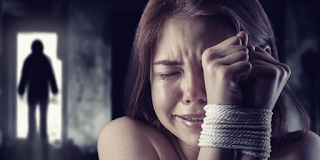Safety and Spring Break
Spring break is one of the most popular times in a college student’s life, and there are many destinations around the country. They are filled with lots of youthful energy but they are also have that possibility of being dangerous and deadly situations. This is not to scare people, but to keep everyone focused on the problem of human trafficking. Students love spring break; it is a time to relax and not worry about school for a couple of weeks, but they still need to make being safe a priority.
The Department of Justice has made a list of the top 20 human trafficking locations populated by students in the United States. If you want to see the list please go to the US Department of Justice web site (www.justice.gov/archive/olp/human_trafficking.htm). The DOJ has shared many tips to keep in mind when traveling on spring break. These do range from always keeping the hotel door locked to not letting people you just met into your room, and always doing research on the place you are heading to that is out of the country or new for you.
Spring break allows the students to recharge on a short vacation before the new semester starts. They are always fun and very entertaining, but one can always remember to stay safe.
“Human trafficking is a violation of the human body, mind and spirit. For this vile practice to be taking place in a country that the world looks to as a beacon of freedom…is a terrible irony and an utter tragedy,” said former Attorney General Alberto Gonzales.
The trafficking of people, commonly known as human trafficking, is a tragically worldwide form of modern slavery. The pursuing and prosecuting of these traffickers and the rescuing of the victims is a high priority of the U.S. Justice Department. When thinking of spring break, many college students take the meaning of spring break as excessive binge drinking, the occasional blackout and sex with strangers.
Unlike the common physical assault or that drug deal that is happening on the street corner near the hotel, human trafficking is more or less easy to miss. That is because it is more than just sex trafficking that has been the emblematic part of the illegal trade.
“The most fundamental thing for us to do is to make people aware that trafficking exists and what they can do to stop it,” said Robin Thompson, the president of the Survive and Thrive Advocacy Center.
Spotting signs of a victim of human trafficking, according to the Department of Justice:
- Exhibits abnormal behaviour or poor mental health
- Is fearful, anxious, depressed, submissive, tense, nervous or paranoid
- Exhibits unusually fearful or anxious behaviour after bringing up law enforcement
- Avoids eye contact
- Is in poor physical health
- Has few or no personal possessions
- Is not in control of his or her own money, no financial records or bank account
- Is not in control of his or her own identification documents, such as ID or passport
- Is not allowed or able to speak for themselves.
Human trafficking represents a 9.5 billion dollar per year industry in the U.S., according to the National Human Trafficking Resource Center. They also have reported that there have been 9,298 cases of human trafficking in the past five years. Not every spring break disappearance is related to the human trafficking system; most are just students ending up in the wrong place and then returning home a few days late and then going on about their lives. Many states such as South Carolina, Washington, Florida, Texas and New York find themselves to be the best targeting grounds for people that are involved in the human trafficking world.
Recent expansions to the law have made combating sex trafficking easier. In January, the U.S. Court of Appeals for the Eighth Circuit ruled that persons arranging for or having sex with a child under the age of 18 who was trafficked are to be considered human traffickers and punished accordingly.
There is no reason to be scared and always looking over your shoulder while on spring break. Go out, have fun, enjoy meeting new people, but just be alert and stay safe while having fun.



Comments
Post a Comment